Release: Santa Cruz Bullit eBike
Santa Cruz Bullit MX could be the world’s burliest trail e-bike. Imagine the gnar-taming capabilities of the big-hitting Nomad and Megatower boosted with Shimano’s new EP8 STEPS motor and you start to see a bike that’s not only off-the-charts capability wise, but in terms of how far and wide you can go with it as well.
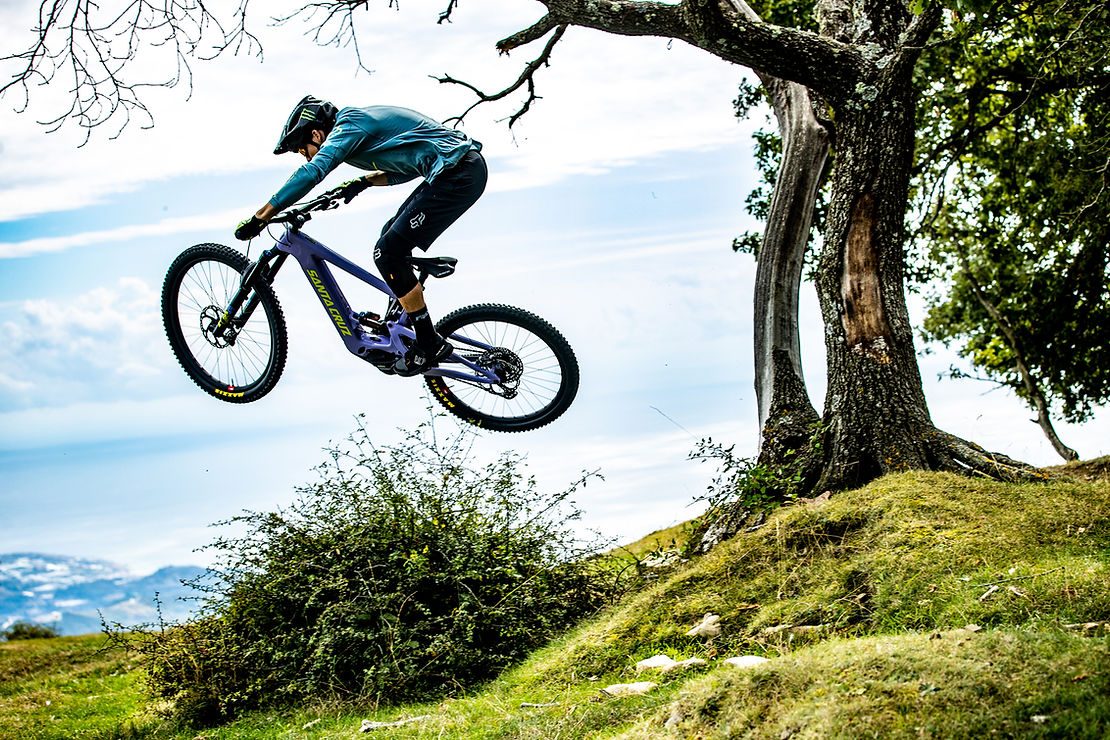
With a high-capacity 630wh battery, the more refined, more powerful—not to mention lighter and smaller—EP8 motor combined with a smasher build, Bullit turns those once-a-year epics into your regular rides, and lets you unlock new long rides you never thought possible.
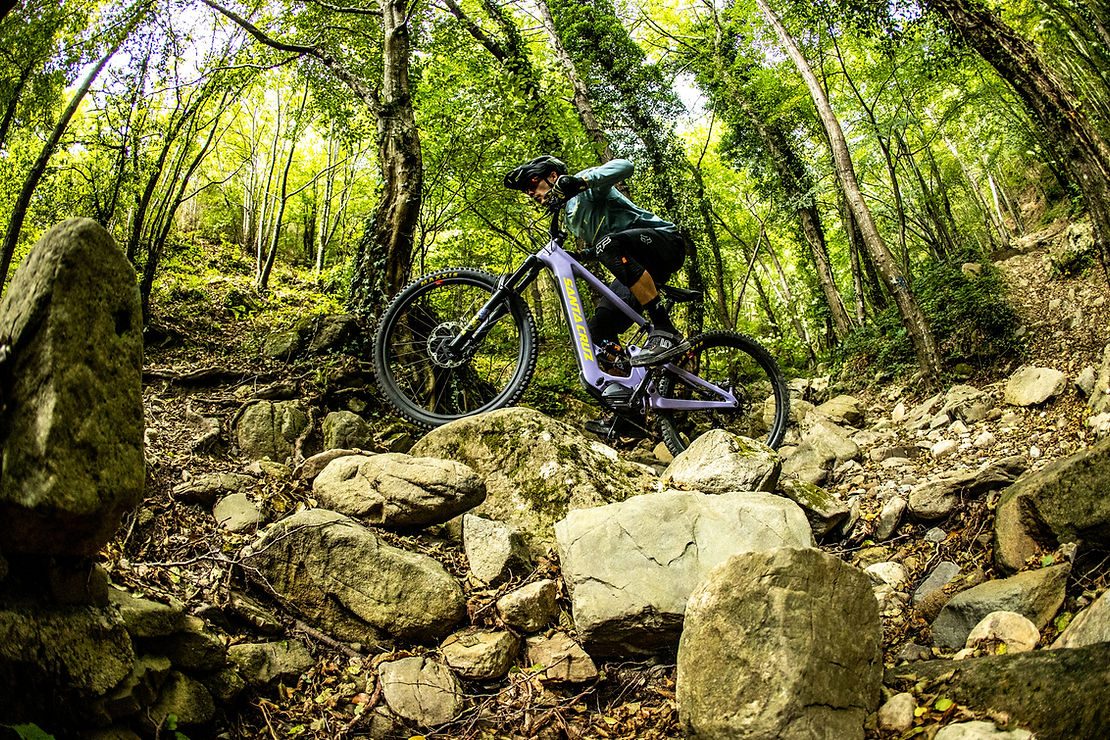
Designed for tackling the steepest and deepest of trails, Bullit’s build - 170mm-travel fork with 38mm stanchions, DoubleDown tires, coil shock options—begs for the abuse of rooty, rocky, horror fests usually reserved for the aforementioned big hitting pedal bikes. Where the Heckler puts a premium on agility and playful handling, the Bullit comes to brawl with a no-limits attitude.
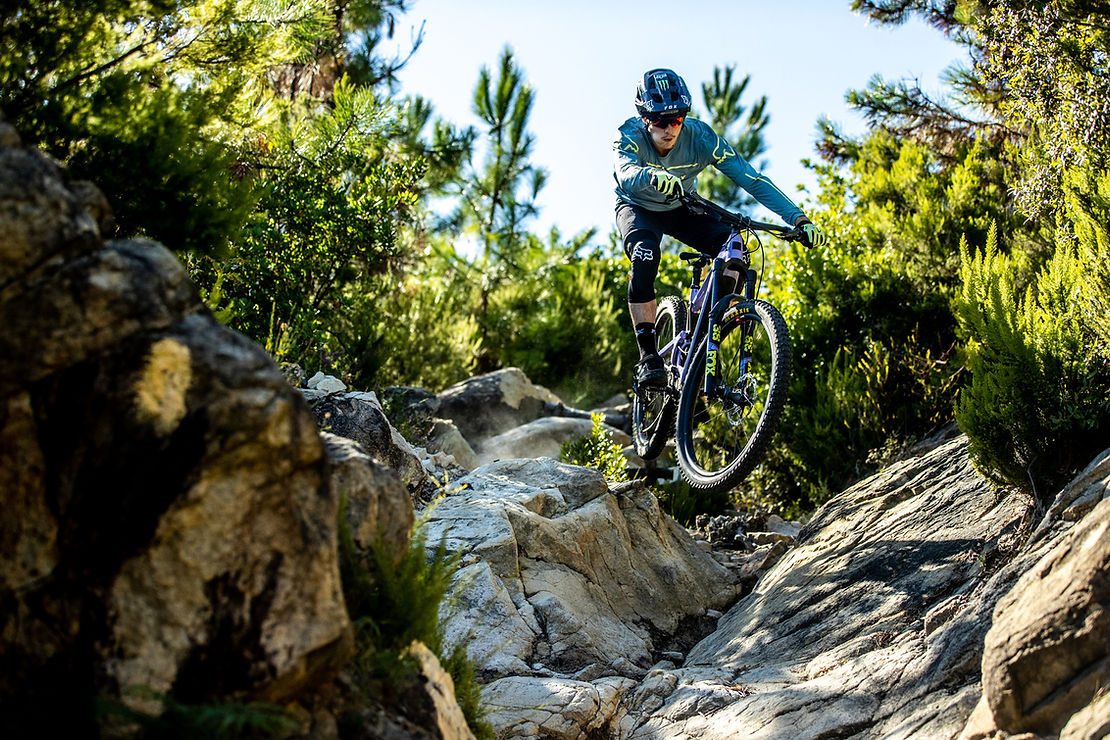
Like many of our bikes, the inspiration for this one initially came from the Syndicate - our works-level DH squad. After champion puzzler and downhill demon Loris Vergier talked us into a mixed wheel V10 DH sled, it was really just a matter of time before we brought that World Cup mindset to a broader use case. And like with Loris’ race bike, we’ve found it provides the confidence-at-speed of a 29er with the more spritely handling characteristics and manoeuvrability of a 27.5 rear end. Unlike Loris’ V10, however, this big hitting mixed bike goes uphill as well.
Build Series: Ibis Mojo x SRAM AXS Pt. 3
This is a review of the bike, so I will not rant on about this set-up, except to say that once I got used to it I stopped thinking about it. I didn’t change anything except the seat height - the frame size was large, so I am lucky my shorter-than-average legs were able to reach the drivetrain with the seat post at its lowest position. In fact, it was the perfect height, and the extra length provided by the bigger frame size meant my longer-than-average torso felt about right on it. The tall head tube put the bars at a higher relative position than what I am used to, and that took a short while to get used to.
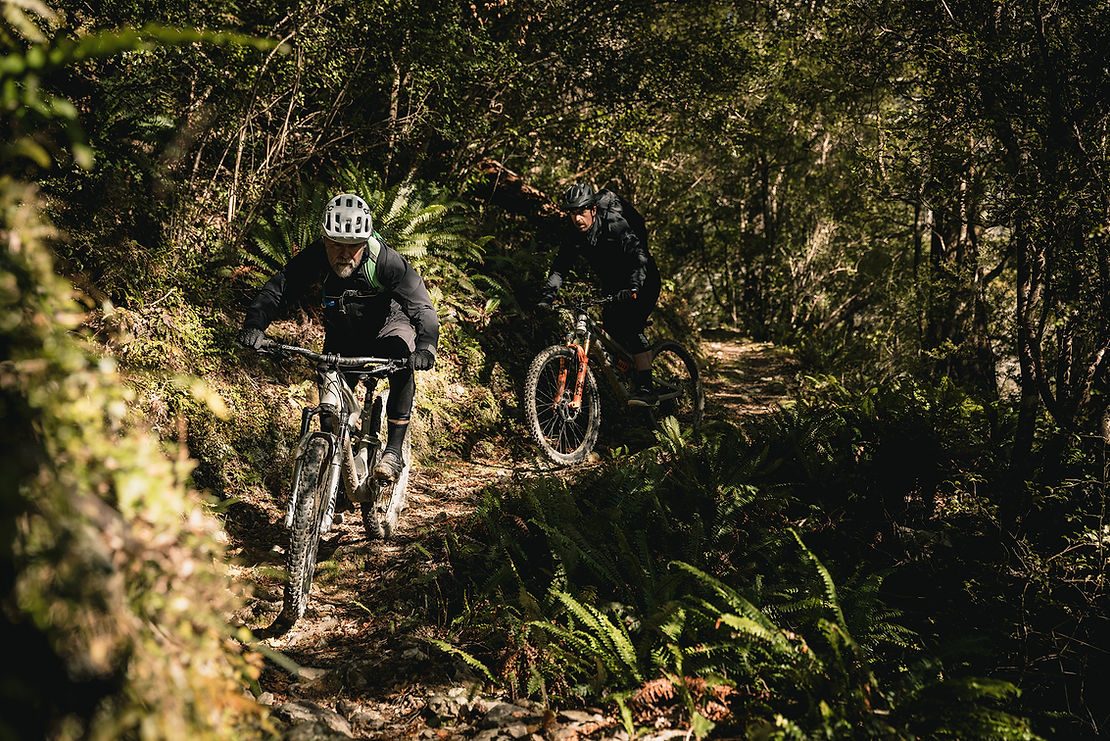
By halfway up the first climb, I felt right at home. The climbs we tackled later in the day were much worse - long sections of both our Queen Charlotte days ran right along the top of a ridge, and some sections were stupidly steep. The Ibis ate this stuff up. When I got off and walked the bike it wasn’t because the bike was not up to the task.
The bike has a 76.6-degree seat tube, which puts the rider in a good position over the bike for climbing - scooch forward on the saddle and the front end will stay planted until you run out of gears (or willpower). Heading back down towards sea level, the bike immediately felt very comfortable. The head angle of 65.4 degrees keeps everything calm and predictable. The DW-Link rear end works with what Ibis call ‘Traction Tuned Suspension’. The best way I can describe the ride is floating, like a hovercraft. It felt bottomless, and definitely as though there was more to the travel than 130mm.
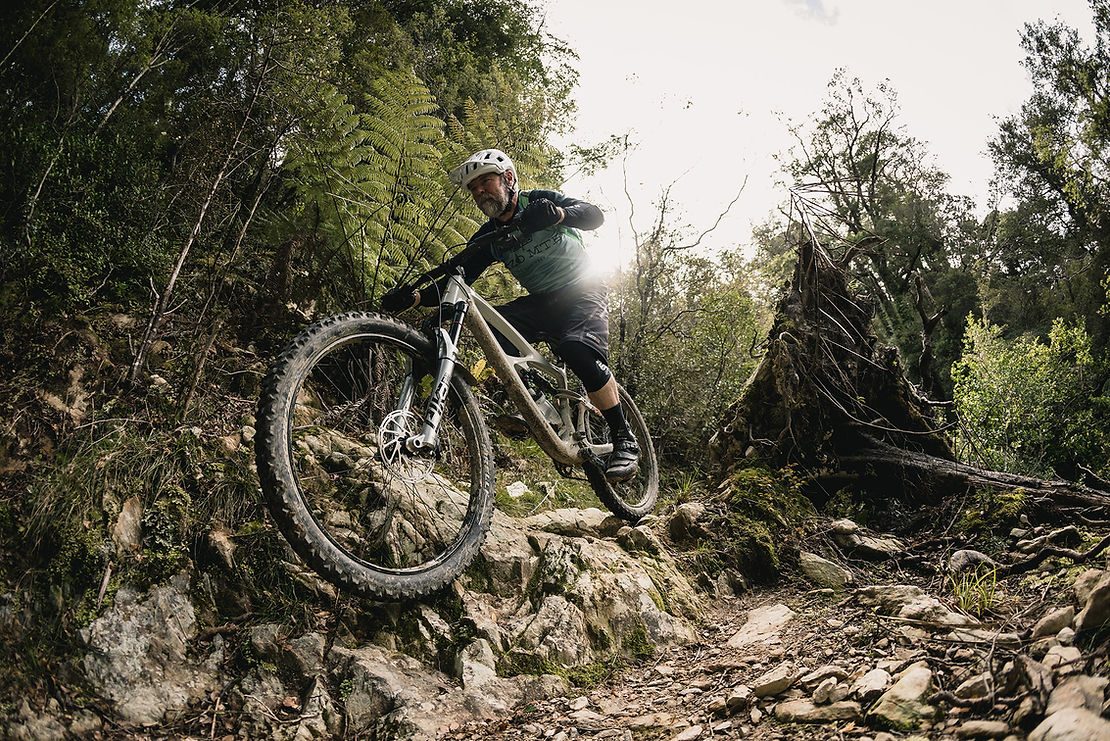
One aspect of the bike that I thought about before saddling up was the wheel size - I had done three years on a 29er, and the conventional wisdom states that the bigger wheels roll over stuff better, provide more traction and allow more wiggle room in uncharted territory, which is where we were going. I need not have worried - in practice there was nowhere the wheel size felt like a liability, and the slightly smaller hoops may have been more playful, whatever that means. The three days of the test period covered an amazing variety of terrain and trail surfaces, and some of it was downright dangerous. By the time we were on the really challenging stuff, I had complete faith in the Mojo and it never let me down. I aimed it where I wanted to go, and that is where it went.
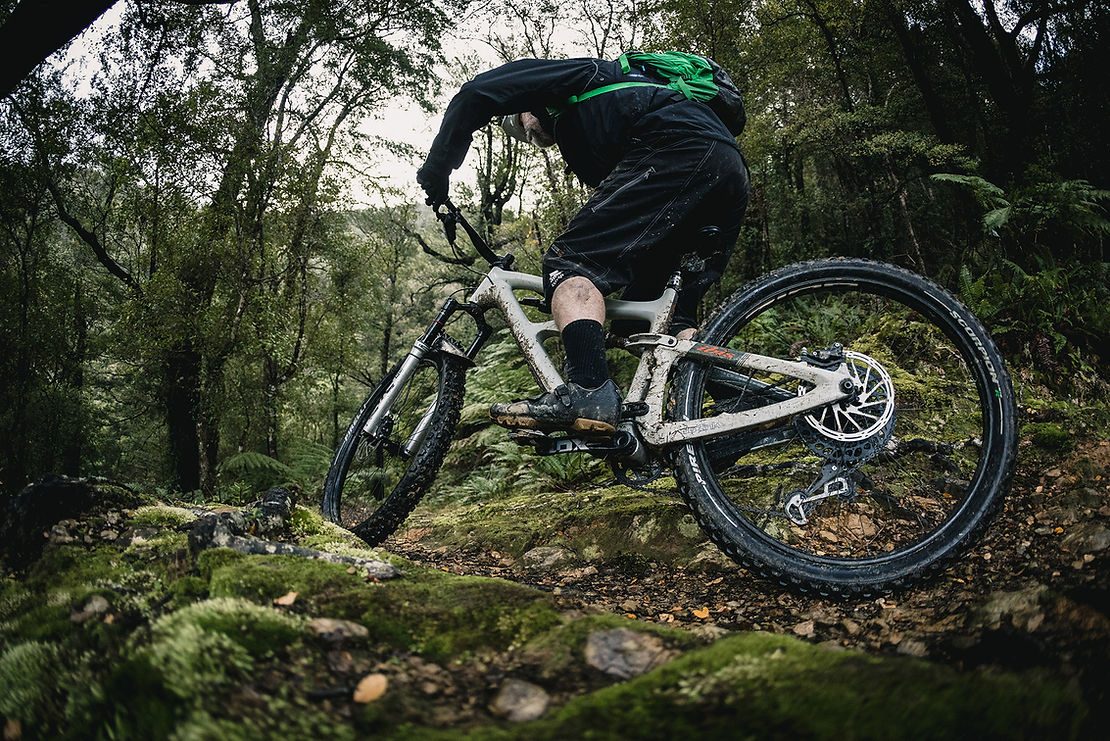
Rider: Liam Friary – I might be the publisher of this here magazine, but I don’t get aboard too many test mountain bikes. My interest was piqued when the Ibis Mojo 4 was touted. I liked that the bike was short travel, 27.5” wheel size (which is what’s on my current bike) and that it screamed playfulness.
I ventured down to Rotorua straight after our trip down south. The extensive trail network would be an ideal testing ground for the Mojo. Immediately, I could feel the bike’s superb pedalling efficiency. I meandered onto some single track climbs and the rig simply ate up anything in its way. The ease of manoeuvrability was also noted. The power I was generating went straight to the pedals - this was helped by the 76.6 seat angle, which put me in a powerful position. I was impressed! But was more impressed about staying on the bike throughout uphill technical sections, which I sometimes struggle with. The rig just ploughed through and kept me moving forward. On the ups, most of the time, I’d leave the FOX DPS rear shock in ‘Trail’ mode and didn’t even think to switch it over to ‘climb’ mode – which pays tribute to the bike’s incredible climbing capability. Especially the V5 DW-link – the thing doesn’t bob. It’s just so damn efficient!
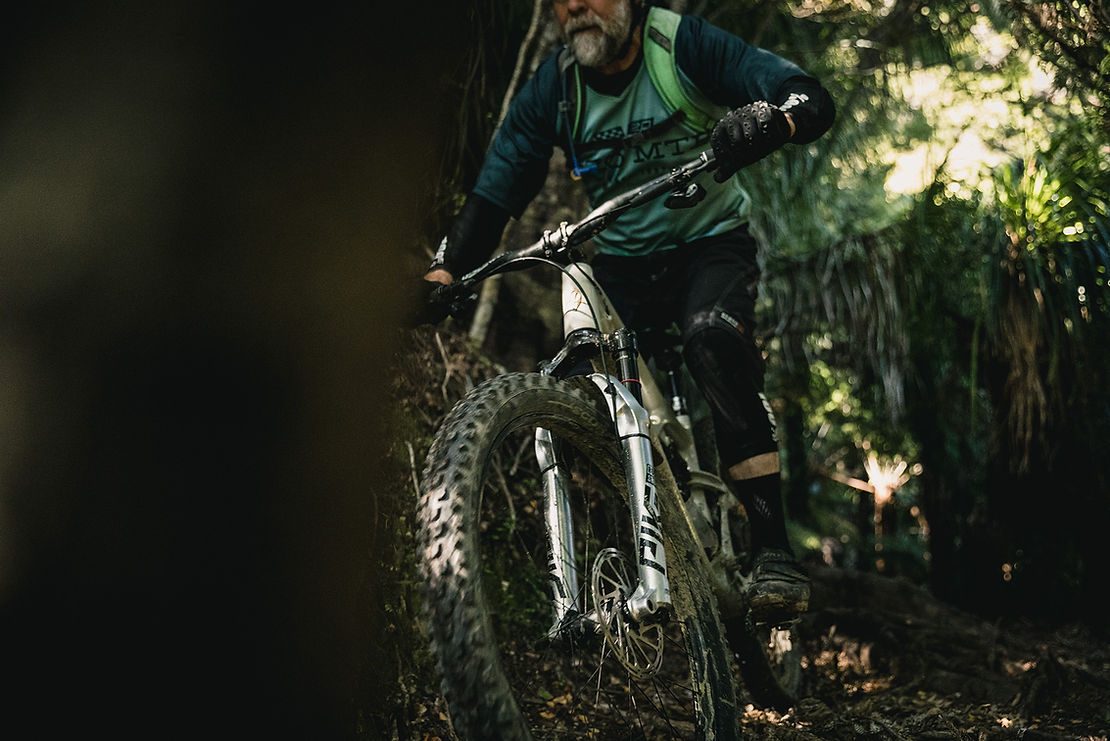
On the downs, the rig’s ability came into its own. It sucks up anything with ease and lets you add flair on the trail without making you pay for it. Again, on the super technical trails, I sometimes struggle but this rig ate em’ all up and kept me upright. I was fooled into thinking I was a better rider than I actually am. The bike’s capability far exceeds the 130mm travel that it has. It’s predictable at speed, stable, and keeps you on course – point it where you want it to go, and it will go! The short chainstays got me in and outta’ turns super quickly – it feels snappy. It’s lively, light, nimble and offers a ton of confidence with its superb traction. It sticks you to the ground and ramps up quickly, avoiding harsh bottoming out. I for one have been super impressed with this bike and, after the awesome time spent riding it in Rotorua, won’t be giving it back anytime soon.
Words: Gary Sullivan & Liam Friary
Images: Cameron Mackenzie
Release: Santa Cruz Heckler EP8 & MX
"The Heckler is about expanding your own trail map – accessing previously unreachable trails, unlocking less-used trails and doing so independently.The full carbon frame and interchangeable 504wh battery keeps the weight down (45.3lb) compared to bikes with larger batteries but it’s fast and easy to put in a fresh battery for even bigger, longer days.
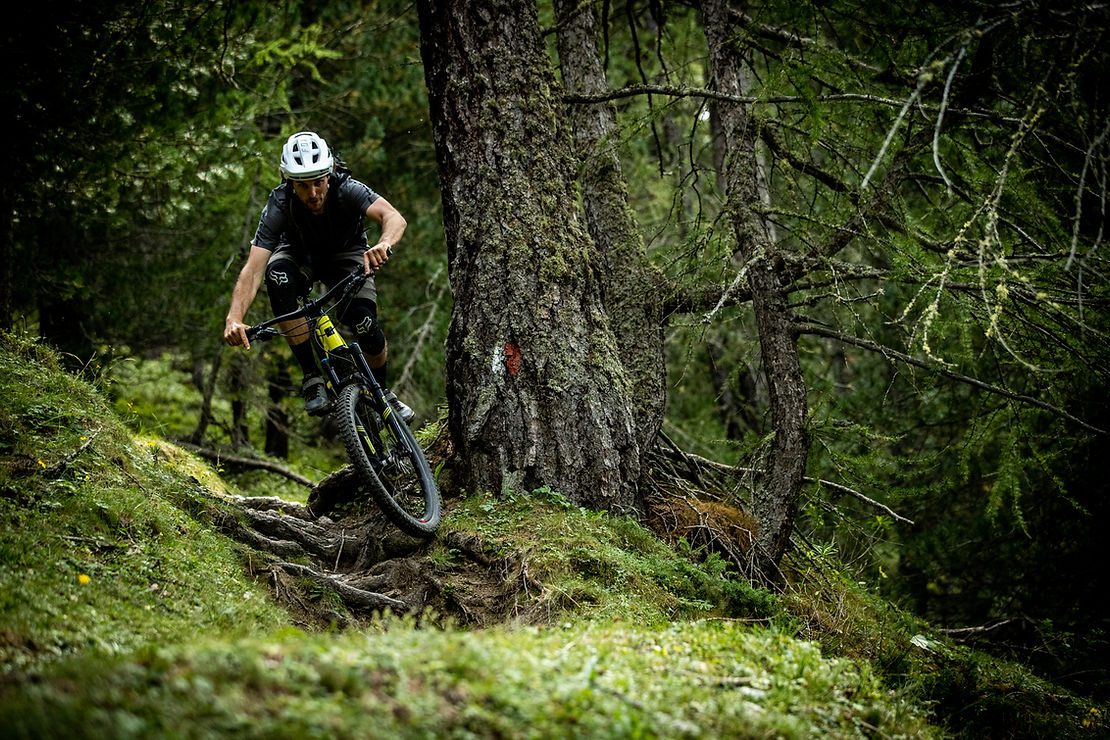
The new Shimano EP8 motor is lighter than the previous unit (310g), has more power (85Nm versus 70Nm), smaller volume (-10%) for greater ground clearance, less drag (36%), more heat resistant, and tuned to give more power in Trail mode. All this means it’s even more capable of tackling longer, tougher rides.
The 27.5-inch wheels keep the bike playful and maneuverable in order to make the most of the trail. The slack headangle (65.5-degree) and 445mm chainstay length provide a snappy and fun feel while still providing traction for when the trail gets steep and technical, both up and down.
Like all Santa Cruz bikes, the Heckler pedals well regardless of watts involved. The 160mm-travel fork is paired with 150mm-travel at the rear to provide a wide range of capabilities. We tweaked the VPP kinematics to have slightly lower anti-squat than other bikes. This adds a touch more support and traction over rough stuff when pedalling seated - a major advantage of having the pedal-assist on your side.
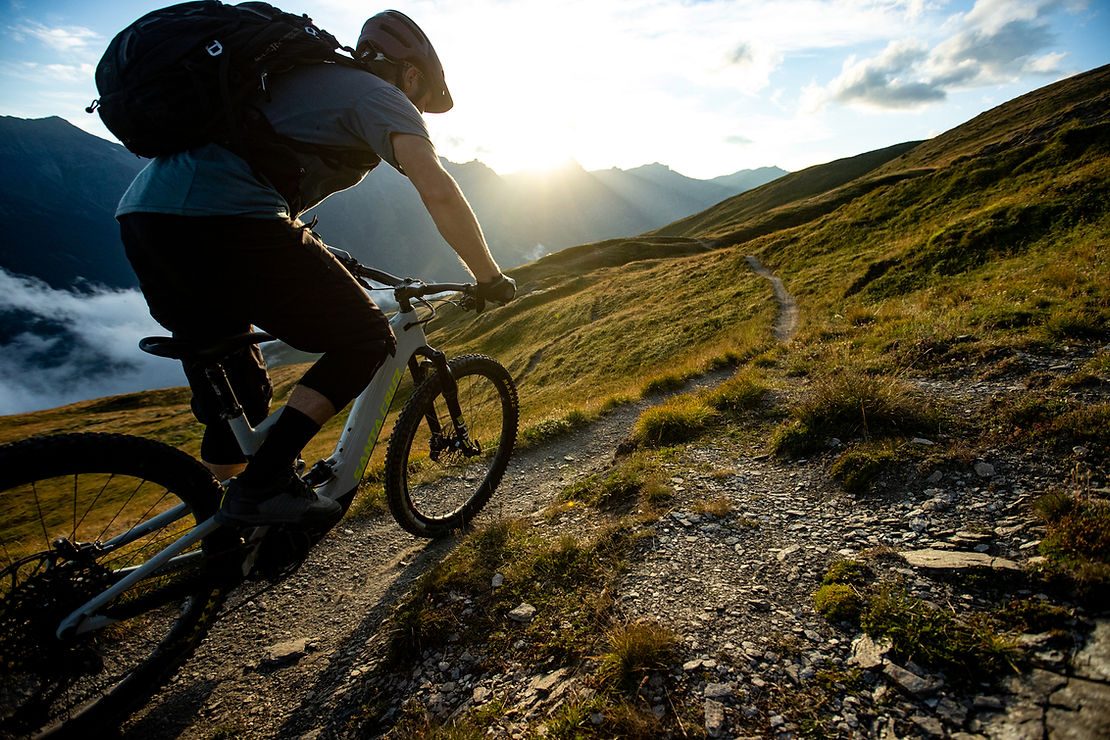
And like every Santa Cruz bike, the Heckler is built for the rigors of true mountain biking. Shimano electronics were chosen for their refinement and reliability, while quality pivot hardware, easily replaceable radial bearings and no-nonsense internal cabling were considered with a mechanics sanity in mind!
The Heckler’s boundaries aren’t defined by distance, laps, or time. The boundaries in our head that say, “Don’t bother”, “Turn back”, “Impossible.” Smashing these boundaries is what got us hooked on riding in the first place. Heckler’s not about taking things easy, it’s about making things possible.
Heckler MX
Our bikes have always been about amplifying fun. So our goal for the Heckler MX was to make something light and agile that can help you on-site blind terrain. A mixed-wheel bike gives the confidence of a 29-inch wheel up front for traction and roll-over when you’re caught off guard by technical features. The 27.5 rear wheel allowed us to keep the moderate chainstay length of the Heckler (445mm), which provides a snappy and easy-to-handle bike on tight, demanding trails. We did this without compromising on the standard Heckler’s geometry, so the bike’s character is still very light and accurate.
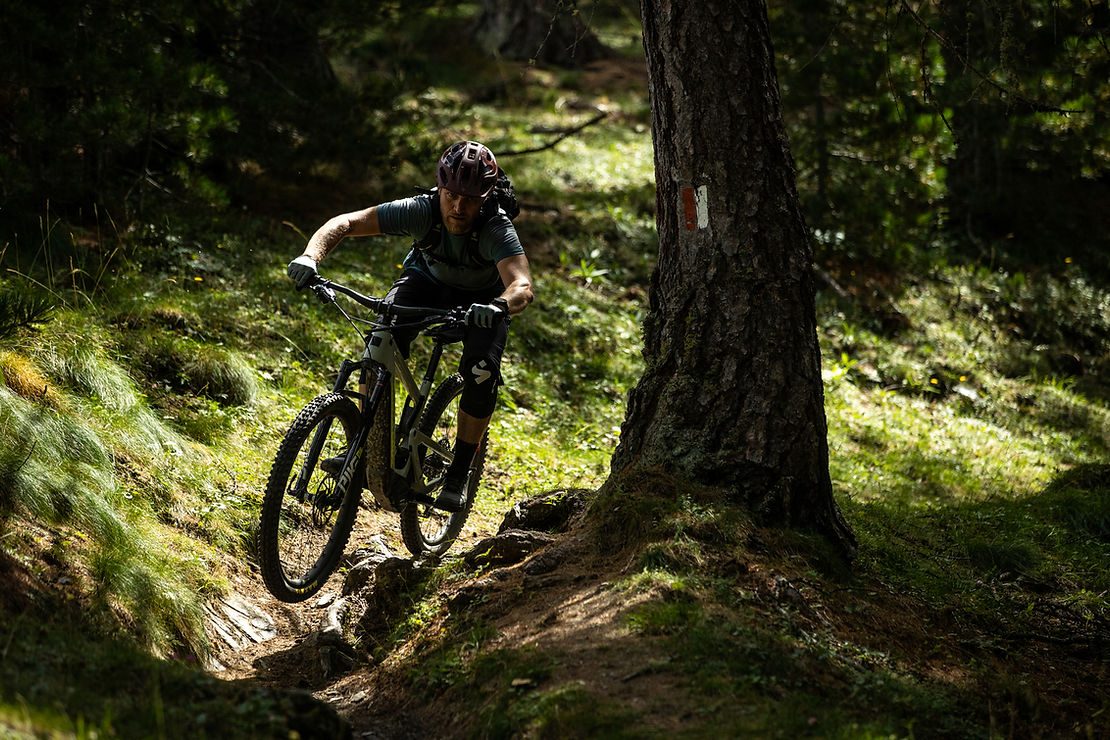
The Heckler is about expanding your own trail map - accessing previously unreachable trails, unlocking less-used trails and doing so independently. Whether tackling rides that are guarded by monstrous climbs, cramming more into less time, it’s about rarer rides becoming the norm for you. The interchangeable 500wh battery keeps the weight down compared to bikes with larger batteries but it’s fast and easy to put in a fresh battery for even bigger, longer days.
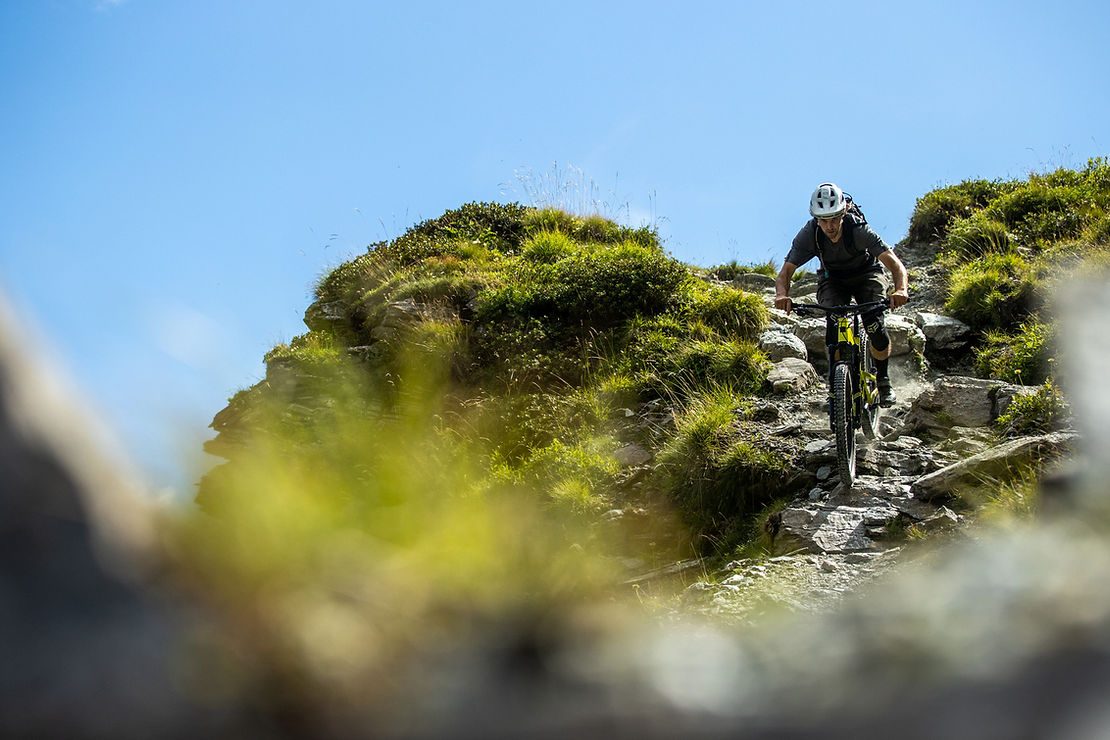
The new Shimano EP8 motor is lighter than E8000 drive unit (380g), has more power (85Nm versus 70Nm), smaller volume (-10%) for greater ground clearance, less drag (50%), more heat resistant, and tuned to give more power in Trail mode. All this means it’s even more capable of tackling longer, tougher rides. We use the full Shimano STEPS battery and motor system again because it means assured reliability and global aftermarket service."
Story: Destination Marlborough Pt. 1 - Presented by Pirelli
To read the full story, subscribe here to NZ Mountain Biker.
Picton is a town most people like passing through. As the ferry terminal for the South Island, travel in either direction involves Picton. If you’re a lucky Northerner arriving in the South Island, it’s a sort of welcome sign that flashes past as soon as you hit the road out. You might spend a couple of hours there on the way back, but if you’re anything like us you will be exhausted and in a kind of funk about having to head back to normality.
Located at the head of Queen Charlotte Sound, the town is small enough to feel crowded into the water by the surrounding bush, but large enough to support a great variety of accommodation, transport, and eating options.
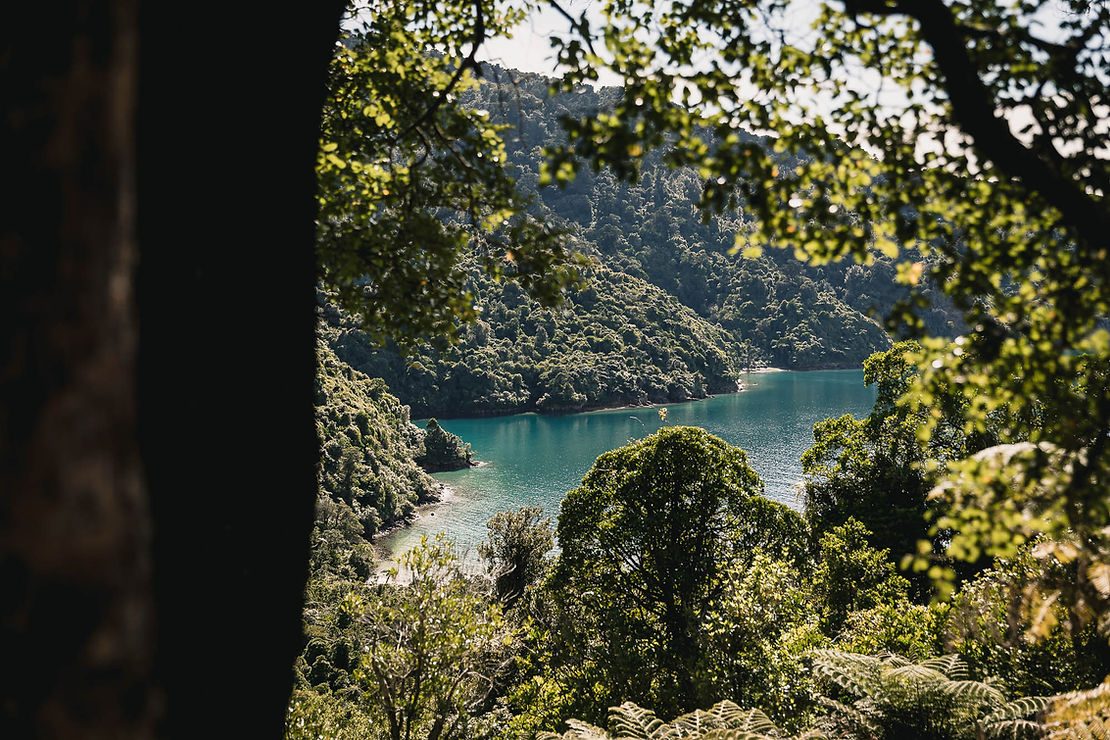
Picton is the traditional hopping-off point for the Queen Charlotte Track. Scratched out of the tough terrain in the early 80s, based on sections of historic trails, the track was opened to walkers in 1983. Keeping a track that is 71 kilometres long in operational condition was beyond the capabilities of the determined people that instigated it, but with the formation of the Department of Conservation in 1987 - and a big effort involving people from DoC and the Air Force - the track was cleared and improved and has been a favourite ever since.
Open to bikes except for a section that closes over the height of summer, the Queen Charlotte was a shoo-in to the National Cycleway project. Unlike many trails developed since, Queen Charlotte was not built for bikes, and that is what makes it so unique as a bike ride.
You travel to the northern start point by boat (it’s the only way to get there), a scenic jaunt from Picton that takes about an hour. You step off the boat in the solitude and spectacle of Ship Cove / Meretoto, the hills ringing with birdsong.
Many people choose to use the other unique feature of Queen Charlotte – a fine selection of accommodation literally en route. Riders can have their gear ferried to many stops along the trail and make the ride last two or three days with no need to be weighed down by baggage. We’d done that on a previous expedition and it was a really good way to do it. Another special feature is that anybody who doesn’t want to ride a section, or in fact any of the trail at all, can go by boat, and be located in a deckchair with a wine and a book by the time the riders come along.
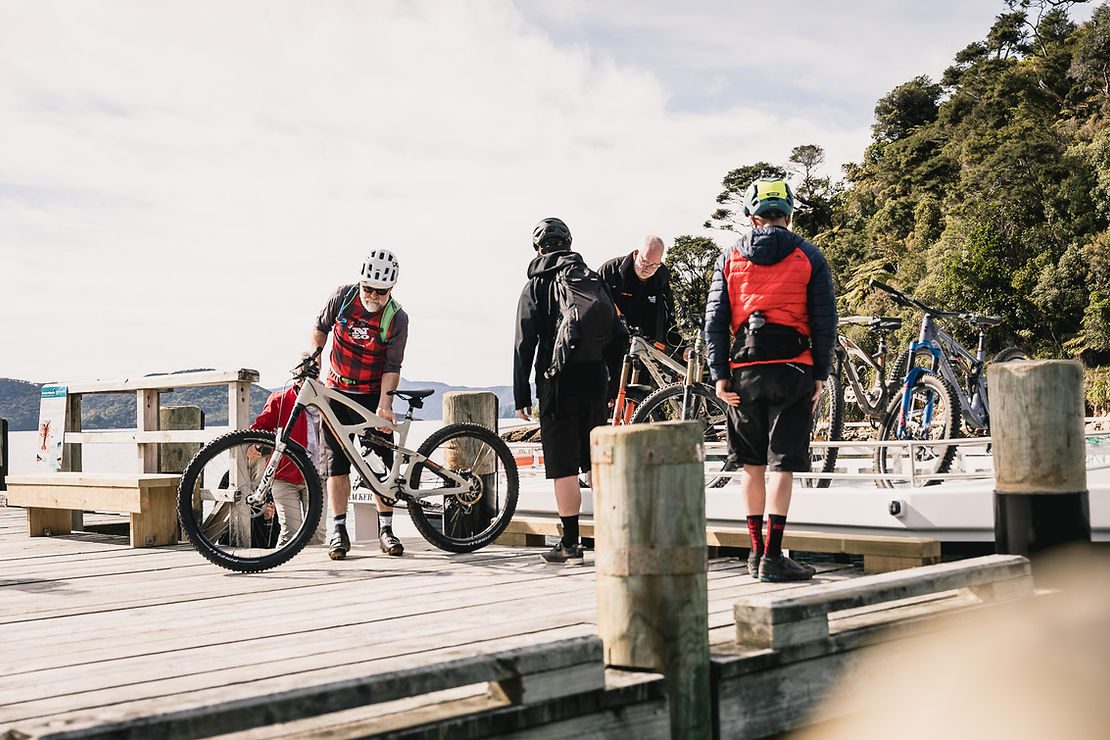
On this outing, we took a different tack, and based ourselves at the Yacht Club for the duration. There are solid arguments in favour of either approach, but the upside of a fixed base is the opportunity to let your kit explode across a room and only have to round it all up again once. As we had two days to do Queen Charlotte, and a third day to ride the legendary Nydia Bay Track, the fixed base won out. The bonus was a couple of extra boat rides, and spectacular dinners in Picton.
Our first day was pegged to be a 51km effort from Ship Cove to Torea Bay. We had breakfast in the hotel, then did the freewheel to the waiting ferry. The boat had a very nice roof-rack with space enough for heaps of bikes, ours as well as some bikes belonging to friends we had along for surprise company – Kylie and Matty were out for a day ride before heading further south. There was space for several more.
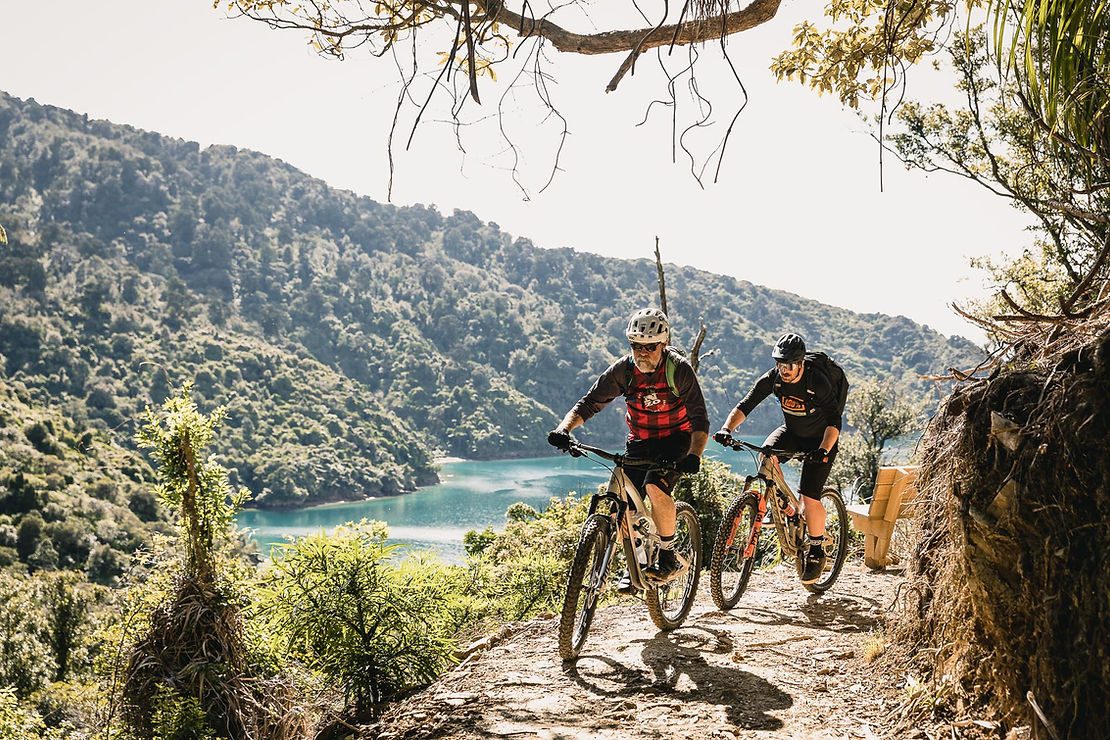
The start of Queen Charlotte Track at Ship Cove is stunning. There is ancient forest, clear water under the jetty, and on this day, a certain trepidation on my part about the first part of the route. On our previous mission, the first climb was very hard. It went straight up, and was almost impossible to ride. To my relief, the track has had some major upgrades, and the new line is a textbook example of how to get to a pretty decent height without too much pain.
The trail switchbacks its way up through the forest before the climb topping out at 237m with a long view toward the rest of the ride. Diving off the saddle there is a really nice section of very fast, wide open trail down almost to sea level in a couple of kilometres, before the climb to the next saddle gets underway. The trail is classic back-country mountain biking.
The Sounds is an amazing place to be – every piece of land seems impossibly steep, and the shore is so convoluted that the Sounds contain 20% of New Zealand’s total coastline. Every high point presents another aspect of that complex geography.
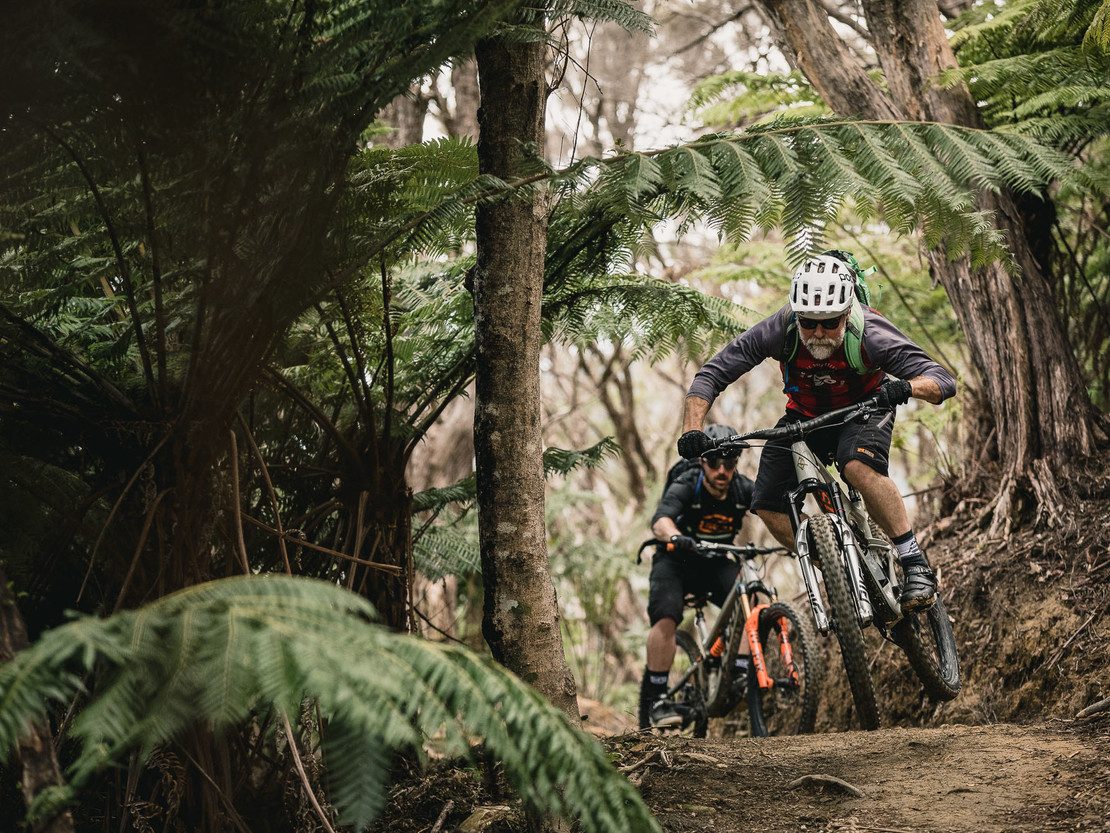
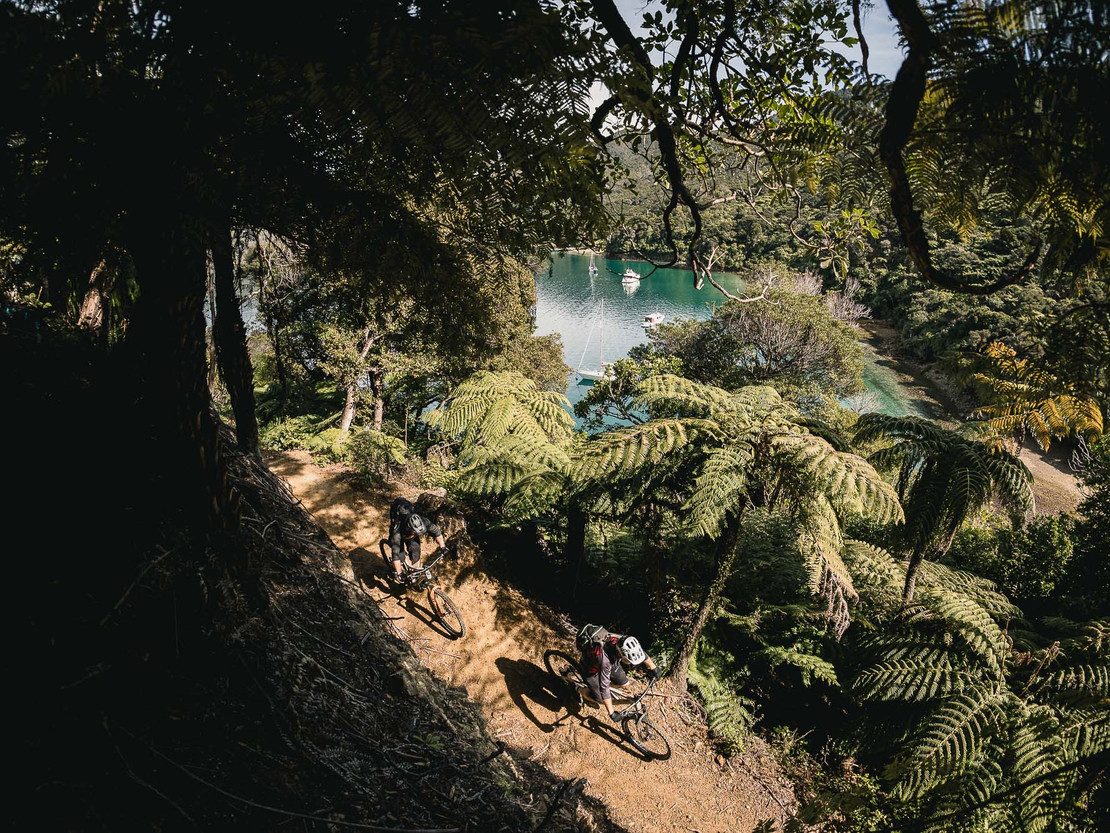

It is after the climb to Kenepuru Saddle that the trail starts to be a grind. Following the ridge gives many opportunities to look out across the Sounds, but it also results in some very steep climbs. Still, among the relentless, almost unrideable ascents, were some neat little sections of downhill. The final descent to Torea Bay, and the surreal experience of rolling on to a jetty where a ferry waited, was a fitting end to the day’s ride.
Words: Gary Sullivan
Images: Cameron Mackenzie
Release: Specialized 2FO Roost Shoes
"At Specialized we’ve spent a lot of time in the saddle and on our feet considering ways to make better cycling shoes. The key is listening to what our own bodies and team riders want in order to develop equipment that meets everyone’s needs. Trail riders want function, comfort, and style. With the Roost, we’re giving riders a shoe that outperforms the competition on the trail, while keeping riders looking good and feeling fresh on and off the bike. Roost for every occasion.
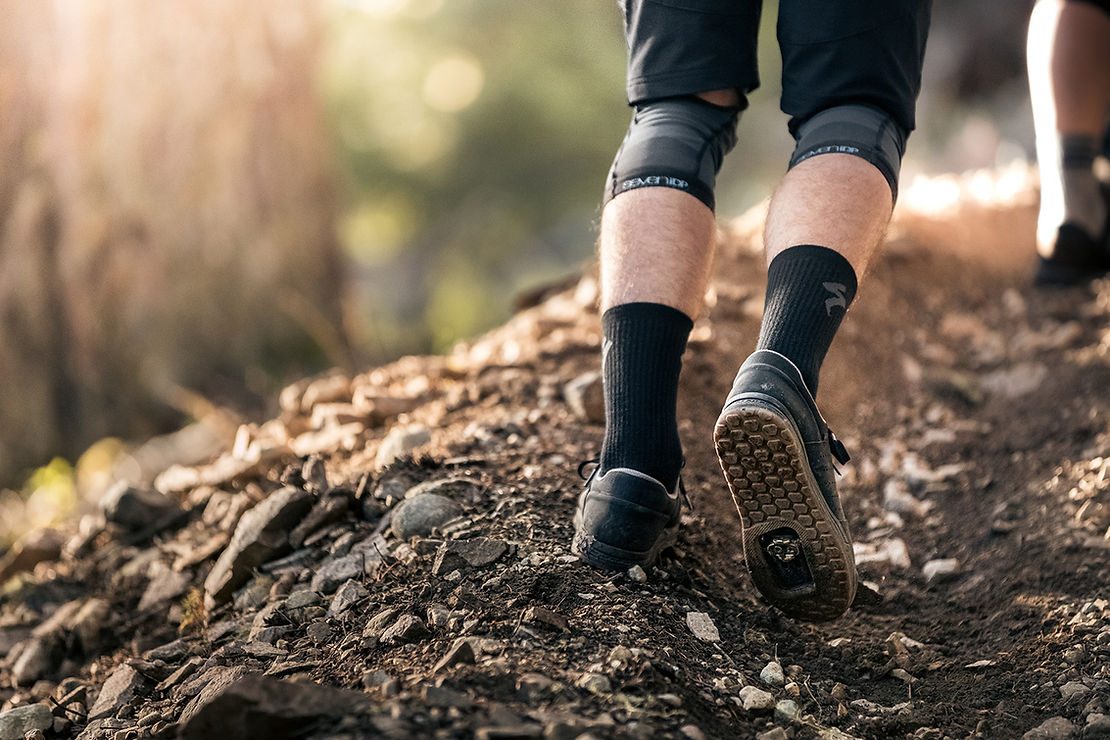
We think of rubber as being bouncy, but bouncy is not what you want in a flat pedal shoe. You want a rubber sole that grips the pins of the pedals without feeling squishy, which gives you confidence that your feet are going to stay put on the pedals. That leaves less to worry about and more to shred about.
The 2FO Roost features our newly developed 3rd generation SlipNot rubber sole designed to stick to and hug pedal pins. Giving riders a sticky, bounceless feel while ripping through rough braking bumps and across trail chunder...chunder? At least that’s what our test riders keep saying.
The clipless version of the 2FO Roost keeps the next generation SlipNot outsole and adds a roomy cleat pocket making it easier to engage your pedals in even the roughest trail situations.
Both models are stiff enough to give you the support needed for a long day out on the bike while remaining flexible enough to make those unexpected hike-a-bike sections or an afternoon shooting the breeze at the local shop completely comfortable. Leave that second set of shoes at home. With the 2FO Roost, you’ll be perfectly dressed for any occasion.
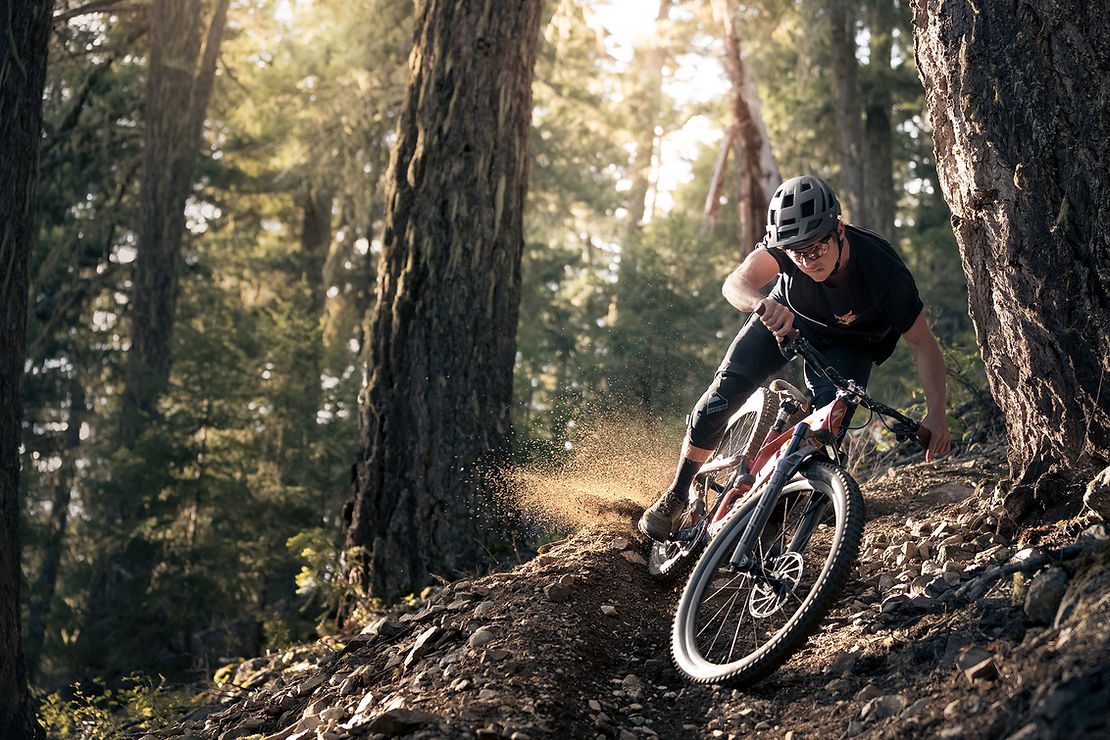
We wanted to keep the Roost as light as possible, so we did away with the traditional foam padding in the upper and replaced it with Xpel™ Airmesh. A lighter, more breathable material, Xpel™ Airmesh retains all the impact reduction properties of traditional padding but with reduced weight a significant increase in drying speed. Because no one wants to ride in wet shoes. And that’s a fact.
How did we take all this science and put it into a shoe that looks this good? A shoe that looks at home in your favorite happy hour spot and while sending your dream line? Designer magic.
But I think we can pull some things out of the hat:
Suede hits and caps are added to the upper in high wear areas for increased longevity and decreased scuff abrasion.
We designed a clean, low-rise silhouette to create a shoe that looks as good on the bike as it does at the brew pub.
It's all mixed together with some sensibly subtle colors and minimal branding, so no matter where the trail end’s you can stick to it and Roost."
Build Series: Ibis Mojo x SRAM AXS Pt. 2
To read Pt. 1 in this series, click here.
When it comes to wrenching on bikes, it doesn’t get much better than this.
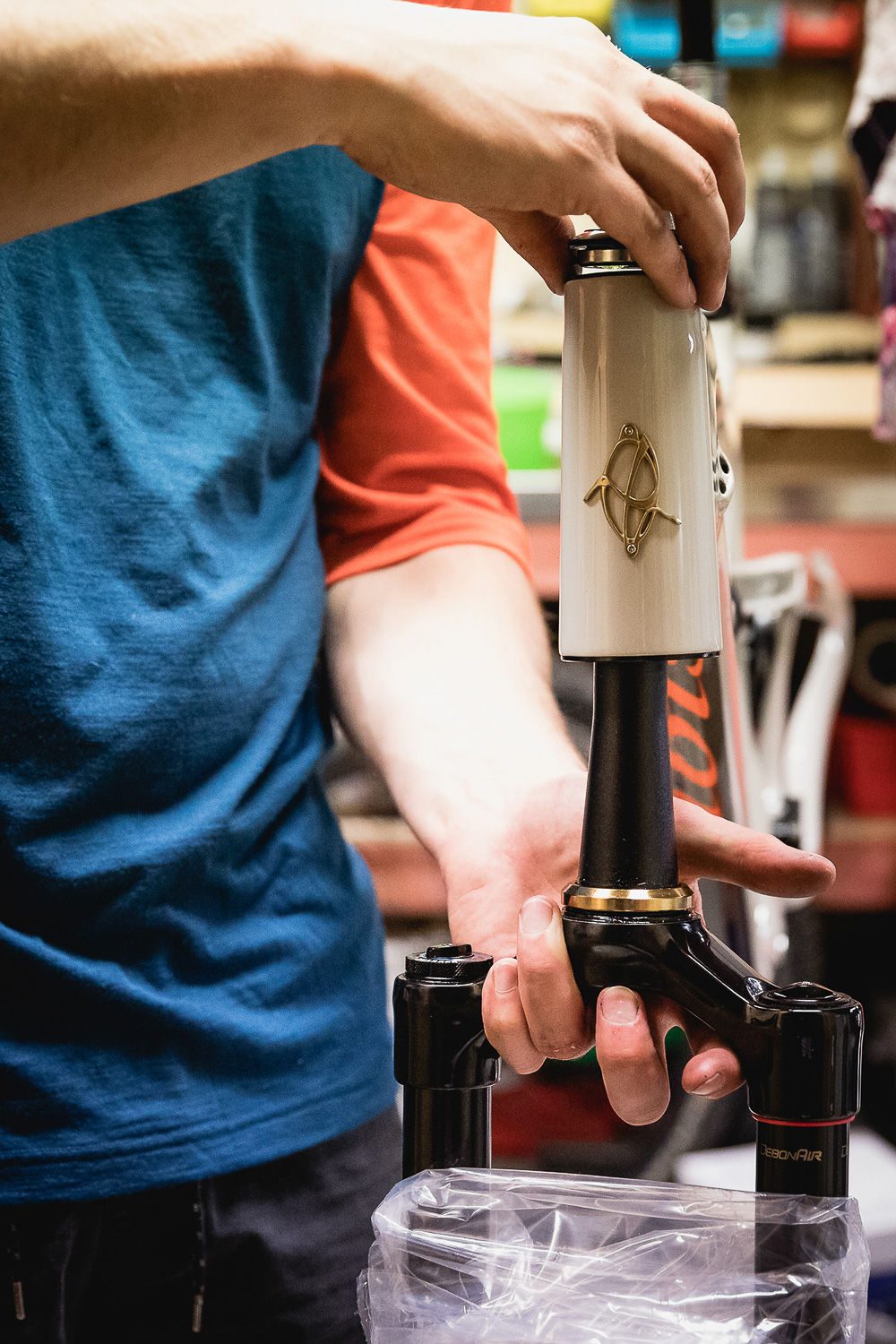
This isn’t the first Ibis I’ve built and it likely won’t be the last - for good reason. The attention to detail on any Ibis frame is second-to-none, and that comes across loud and proud the minute you get a frame or bike in the stand. This translates to an easy, clean build, and this latest creation was no exception.
I almost wish we built this Mojo up with cabled gearing, simply down to the simplicity of cabling the rear derailleur, dropper and brake. All Ibis frames feature internal tubing for the cabling to route through, resulting in rattle-free builds and tool-free assembly; you just route the cable through one end and out it pops at the other.
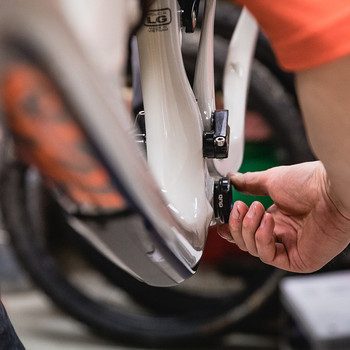
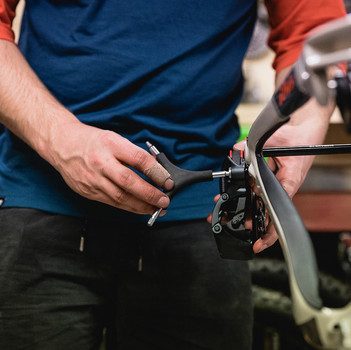
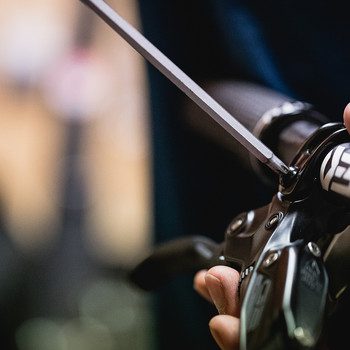
SRAM’s AXS take all the fun out of that process: it’s too easy. I know it sounds like a complaint - it isn’t! - but when a frame is so well crafted, you want to be able to enjoy the experience of assembling it, rather than just attach components via a thread and it be over.
There isn’t any commentary really, other than to say that with good ingredients and good prep, the results yield exactly what you hoped for, without issue.
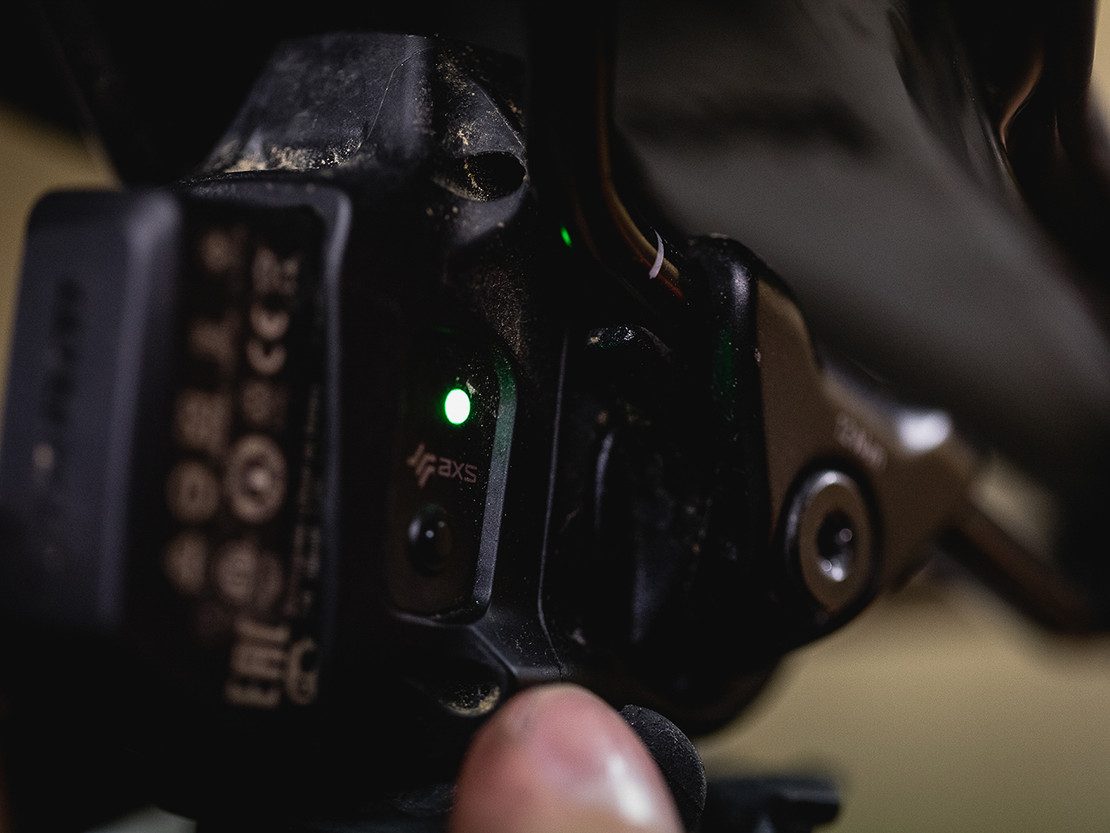
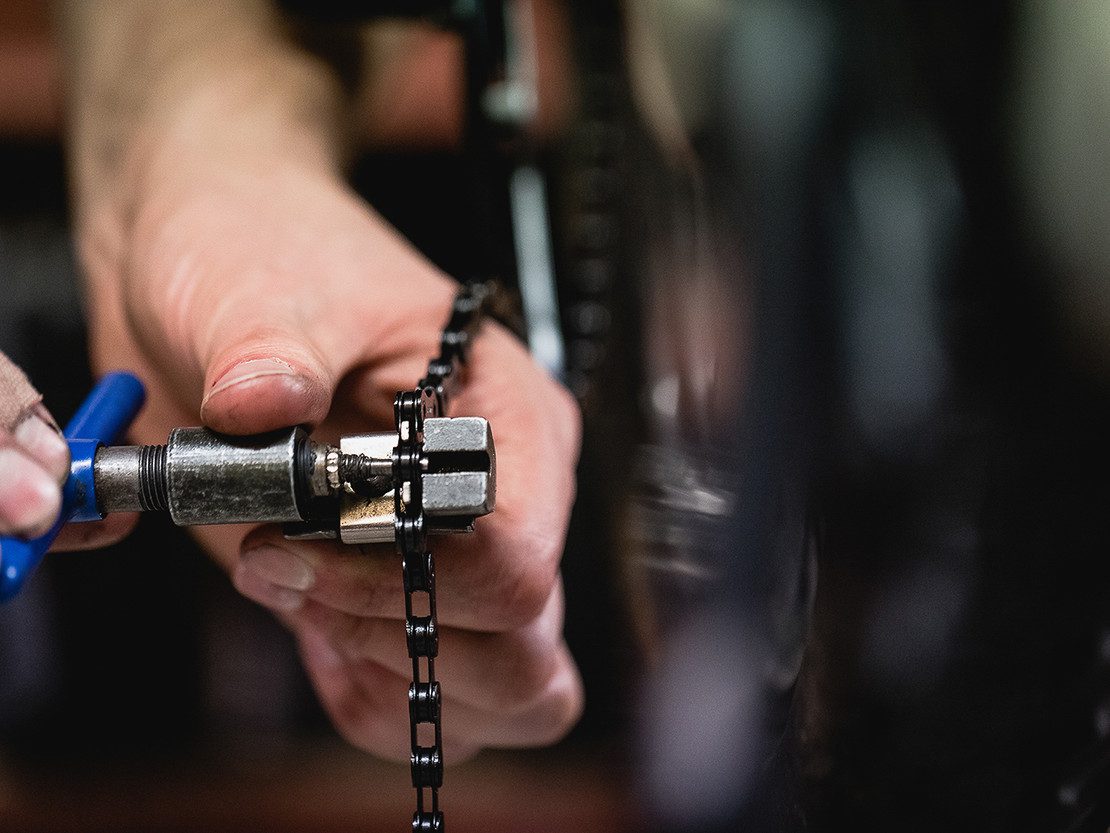

A short travel 27.5” bike with aggressive geometry of this nature seems to be a dying breed, and the mullet build would have helped to increase the lifespan and versatility of the Mojo. It’s not to say that the recommended setup is bad, just that things could be done differently, for better or worse. It was something I’d pushed for, but brand constraints meant we’d need to keep things clean shaven.
I’m sure this won’t be the last time we work with the Mojo. The mullet seed has been sown, so let’s see what comes of that in future issues.
To read the full story, subscribe to NZ Mountain Biker Magazine here.
Words & Images: Cameron Mackenzie
Review: Pirelli Scorpion Tyres
Read Part 1 here.
I was happily surprised with the way the Pirellis handled things. The front end didn’t flinch, the bike heading straight where I pointed it. Any deviation was my fault. By halfway down I was feeling pretty confident, and the biggest root tangle was successfully navigated, delivering me to the small shelf I was hoping to get to, avoiding a slither into the quagmire that is the low-line on the trail. I ducked out of the trail and headed back up the hill, to take a run through the glorious Tuhoto Ariki, three kilometres or so of similar country, with a decent climb in the middle. The climb has a few sections that require your rubber to provide a firm grasp of the planet. Once again, no worries at all. I couldn’t get the rear tyre to let go. Near the end of the ride, I took a detour to an old section of trail that climbs steeply up a 50-metre straight. It would be an eye-watering climb without the tangle of pine tree roots that crisscross the surface. They are at a variety of angles, and feature a variety of height above the dirt - if I am fresh and feeling my oats I can get to the top about eight times out of ten, but that’s when it’s dry. I have to approach it in a series of tacks, slowing almost to a standstill between tricky bits to avoid passing out. How did we go? Very well, thank you. Once again, the front end was sure footed and the rear tyre provided drive with zero slippage.
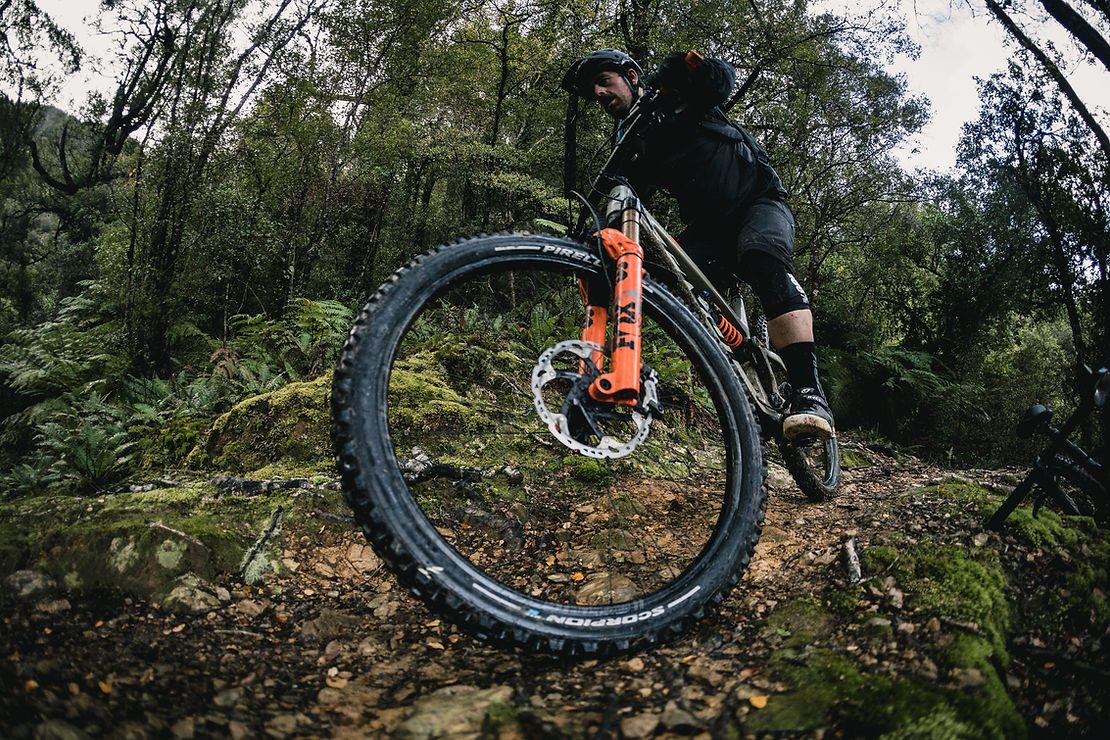
Within 24 hours the trails were gold. Dry trails in a Whakarewarewa winter are about as good as dirt gets. I expected the wide open spacing of the front tread to be a liability but was actually amazed by the grip. I am not the fastest thing in the woods by any stretch, but it is all relative and at my version of warp speed the Pirellis were very impressive. I had dropped the pressure a little more, to around 17psi on the digital gauge, and that is where the tyres really started to shine.
The Trail tyre range has a beefy sidewall reinforcement to prevent the tyres from changing their shape as they are tipped over. The round profile gives a firm grip even when leaning hard, and a turn delivers a pleasant buzz of rubber grappling with the surface.

For the final round of testing, we were lucky enough to be able to evaluate a 27.5 X 2.6 set of Pirellis on a different bike, this time an Ibis Mojo 4, and on foreign country, three days in the Marlborough Sounds. Over the next three days we rode on just about every conceivable surface: the Queen Charlotte Track has loose rock, hardpacked clay (both dry and wet), mud, regular dirt, and grass. The trails to Nydia Bay and beyond featured rock, big lumps of loose rock, smaller lumps of same, the muscular wild cousins of the tame roots we have up north, and all manner of dirt - as well as hefty helping of pine needle carpet for dessert. If you want a long weekend to test tyres, you will struggle to find a better venue.
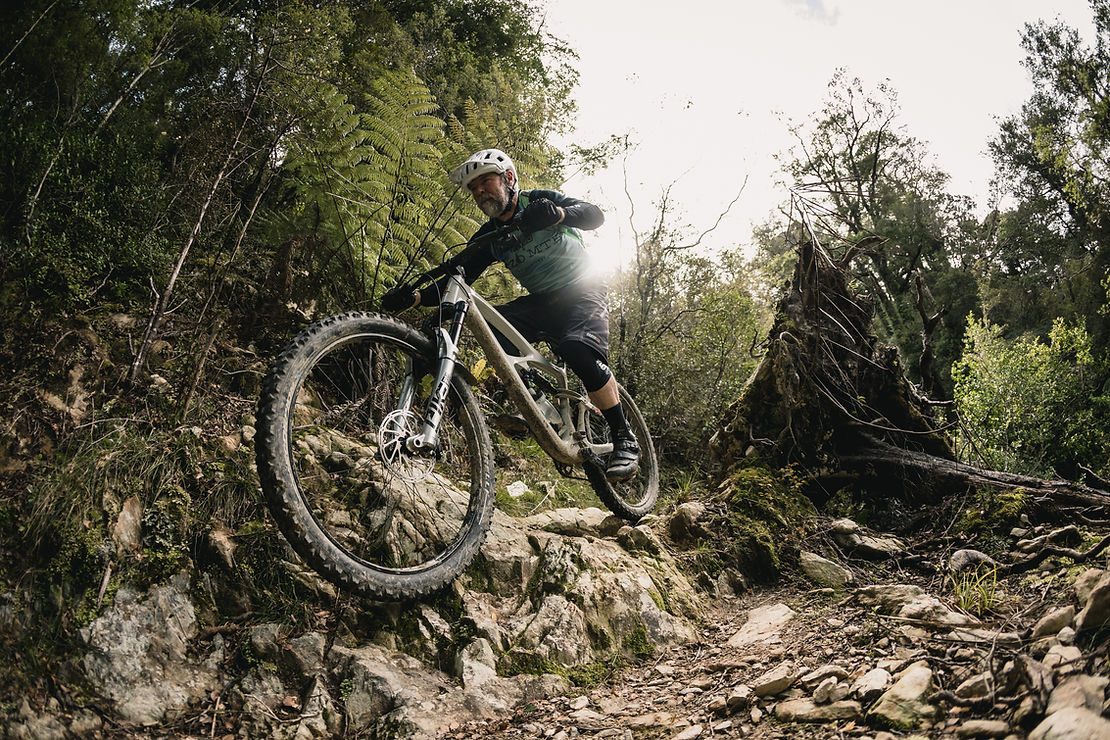
I went directly to a low pressure setting, and pretty much stopped thinking about tyres. Complete confidence was achieved on the first climb (loose, fairly small bits of rock) and subsequent descent (similar, with some hard packed clay and junior roots).
We had mercifully trouble-free rides, I had one crash which had nothing whatsoever to do with the tyres, and no flats on trail that must have claimed some scalps. If you are looking for burly tyres that do their job with minimal fuss, give the Pirelli Scorpions a go.
Pirelli Store Locater is here
Words: Gary Sullivan
Images: Cameron Mackenzie
WIN! With NZ Mountain Biker & earSHOTS

It's not quite summer yet, but we've partnered with our friends at earSHOTS to give you the chance to win some rad prizes over the next few months! From 4th November 2020, you've got the next two-weeks to make an edit of you out shredding your local trails. Upload it to your Instagram, tag us and earSHOTS, and use the hashtag #NZMSummerShredit to go in the draw to win a prize with a retail value of over $200!
How to Enter:
1 - Create a 20-30 second long video of you shredding your local trails. Must be shot and edited on a phone or similar mobile device - no cameras! Find a list of mobile video editing apps here.
2 - Upload your video to your Instagram feed and tag @nzmountainbikermagazine, @ride_earshots and #NZMSummerShredit to enter. Make sure your account isn't private for the duration of the competition, otherwise we won't be able to see your entry!
3 - On the 18th November, we'll select our three favourite videos, and then it will be up to you to vote and decide our winner! Get your friends, family and anyone else you can think of to vote for your video!
Charge up your phone, rope in a buddy, and head out to your local trails to get filming!
Terms & Conditions
The competition is only open to people living in New Zealand. Entrants will be disqualified if found to be using cameras, computers etc to create their videos. One entry per person. NZ Mountain Biker Magazine and/or earSHOTS may share your videos. By entering the competition, you grant permission for this to happen.
Build Series: Ibis Mojo x SRAM AXS Pt. 1
Well, we’re bloody stoked to bring you another edition of the build series. We’ve been hustling with brands in between riding trips, writing assignments, print deadlines and the rest. This time, we’ve got the new Ibis Mojo 4 frameset paired with SRAM’s AXS. Both the frameset and groupset are on point for the current times, however, the frameset is bucking some recent trends, as it is 27.5” - not the commonly seen 29er. But, more on this later… With a few ride trips lined up for the bike once it was complete, we were pretty excited about putting it together and immediately got underway.
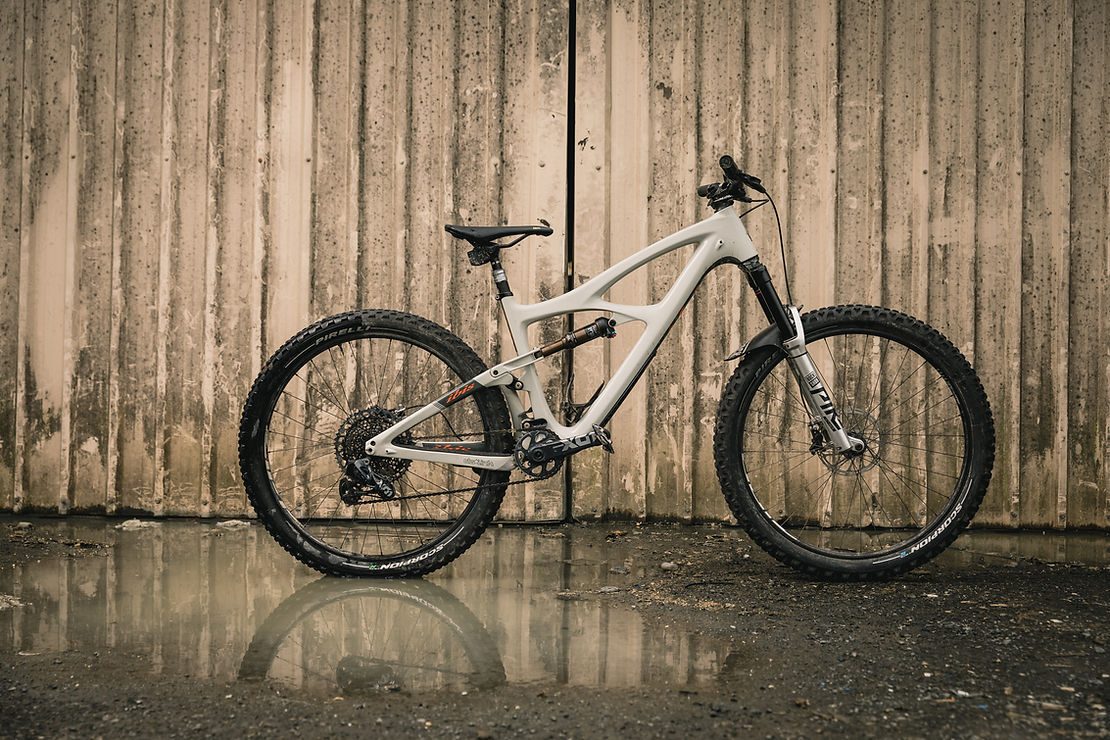
Most of us don’t get to ride exotic locations very often, and I can count the number of times I have done so on somebody else’s exotic bicycle on one digit. Well, three, if we individually count the three days from the recent trip I took to Marlborough Sounds with NZ Mountain Biker. Learning I could join the junket, without needing to lug a bike along, was a huge relief. I have disliked sending my bike over the airport baggage check-in threshold ever since I watched a couple of big fellows off-loading bags from the conveyor belt to their little trailer on the tarmac many years ago. If they had been attempting to explore the performance envelope of the suitcases they were hurling around, they could not have been more comprehensive. If it must be done, package well. If it can be avoided, even better.
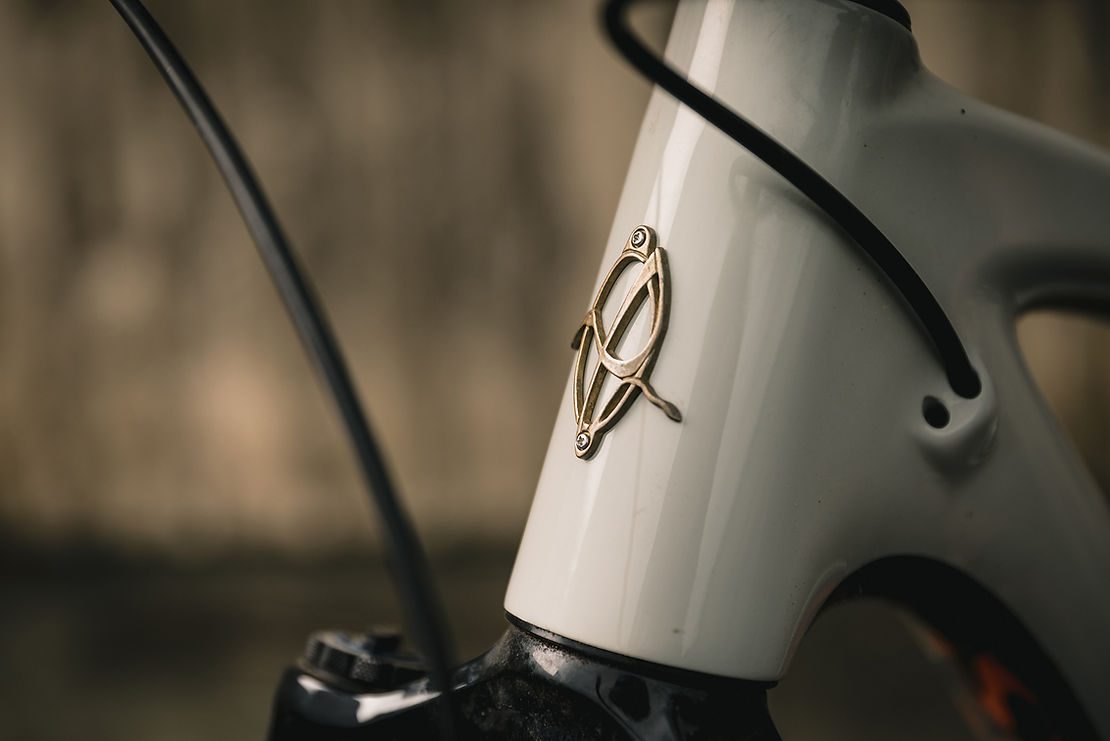
Getting to try the new Ibis Mojo with a deluxe build kit was just one of the things I was looking forward to down south. Ibis is one of the real bedrock brands of mountain biking. While Specialized was working out how to mass-market the new sort, several small operations were making hand-built steel frames and pushing the sport forward. Scot Nicol founded Ibis 38 years ago, after working on hot rodded old Schwinns, then learning at the workbench of Joe Breeze. Scot is one of the company’s owners, and still works at Ibis.
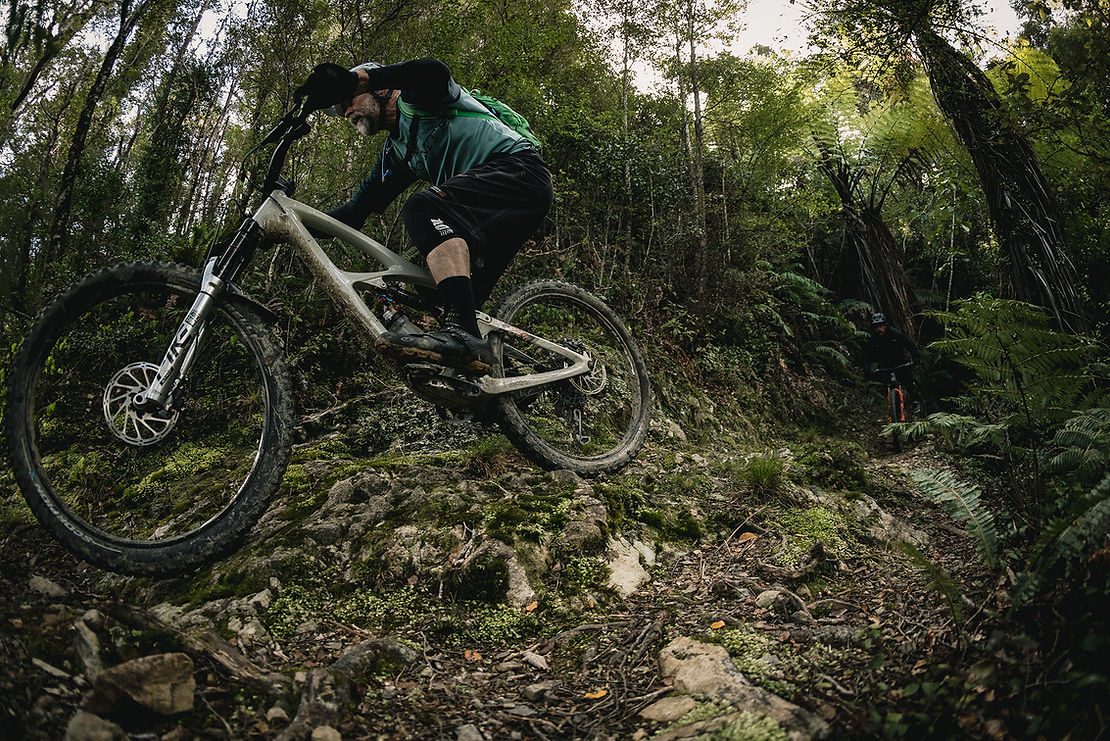
The Ibis Mojo 4 is a mid-travel trail bike with 27.5” wheels. Sporting 130mm of rear end travel, with a 140mm Pike up front, this carbon framed beauty has the Dave Weagle designed DW-Link rear end that allegedly provides all the good things we look for in a suspension platform. It is damped by a Fox Float DPS EVOL. The frame design of the Ibis Mojo is one of the more recognisable shapes around. Created by Ibis partner Roxy Lo, the swoopy look of the Mojo has survived through a half dozen iterations. Roxy Lo was hired as designer from outside the bike industry, and the view she brought to frame design was fresh. It still is – and the process of creating the frame is interesting. Weagle provided the suspension kinematics on paper, and Lo used those fixed points and movement arcs to draw the shapes that became one of the most influential designs of the modern era. The lines remind me of the Schwinn cruisers that became the ‘klunkers’ of early mountain biking, rendered in carbon fibre. There was a Mojo made of steel in the Ibis line-up as far back as 1991, but the first carbon Mojo landed in 2006. New Zealand was one of the first places in the world to see the product - there was an example on display at the ’06 Worlds in Rotorua. At the time, the industry commentators struggled to come up with a tag for a 140mm-travel rocket ship that could go uphill like an XC bike. They settled on “all-mountain”, a new term coined for this very bike. Ibis was not the first to the carbon dually party, but their take on the way a bike can ride - and look - has driven the performance and aesthetic goals of a lot of bikes since the first Mojo arrived.
Words: Gary Sullivan
Images: Cameron Mackenzie
First Ride: Pirelli Scorpion Enduro Tyres
Pirelli is a company with massive involvement in just about every competition that involves tyres. The Italian brand makes the only tyre used in F1 and Superbike, and supplies teams competing in WRC rallies, MotoCross, and over 350 other competitions world-wide.
With a pedigree that also includes a history as the top quality maker of racing tyres for roadies, Pirelli re-entered the cycle sport world in 2017. Starting with road race tyres, the company now has a big range of mountain bike tyres, with XC and Trail already in the bag, Enduro ready to go, and Downhill coming in 2021.
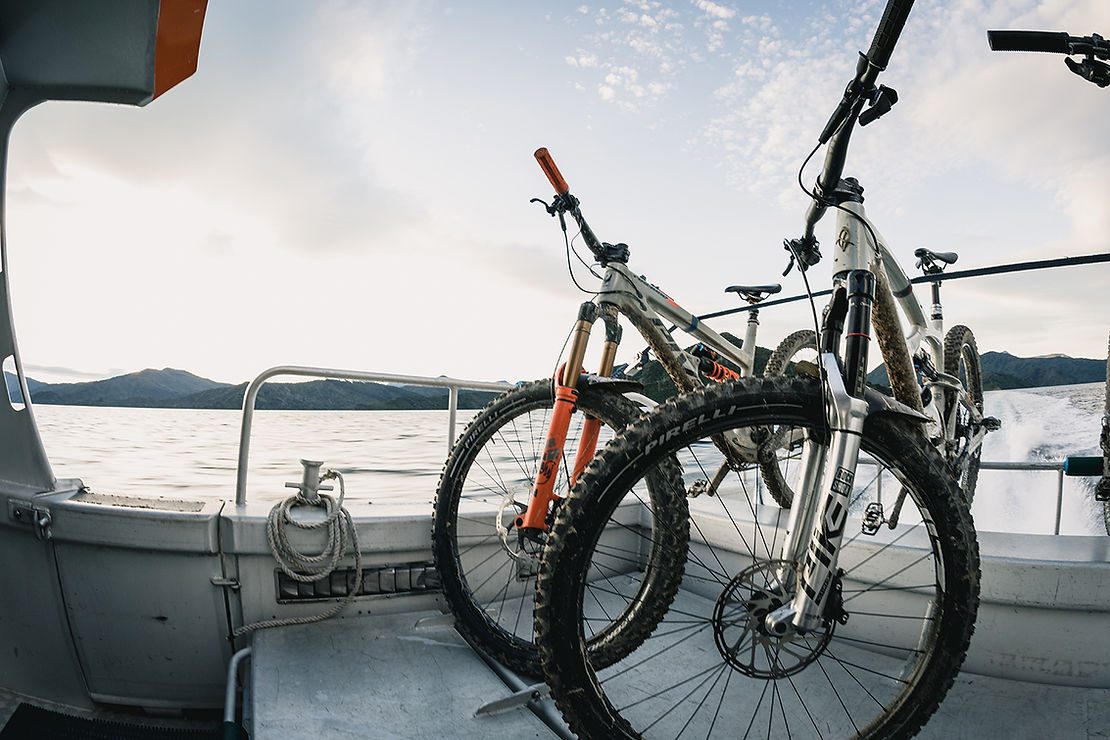
A factor that sets Pirelli apart, is their method of product development. Over 2000 people are employed in R&D, and the way they are organised is interesting. The departments working in the different facets of tyre development, work on that aspect of the entire Pirelli range - for example, the chemistry of the rubber on a tyre designed for mountain biking draws on the knowledge of a team who share data from the chemistry used in every application the company works on. In developing their bike tyres, the designers were not constrained by cost, because compared to a car tyre the materials used makes up a smaller part of the overall cost of the product. The design teams could go all out in perfecting their products, and the way the mountain bike tyres are designed is a testament to that approach.
The challenges in creating a mountain bike tyre are generally met with compromise. Light weight is set against durability, and so is the grip factor of the rubber used. Knobs must be tall enough to do their job for the category they are aimed at, and strong enough to resist tearing off or wearing down too fast.
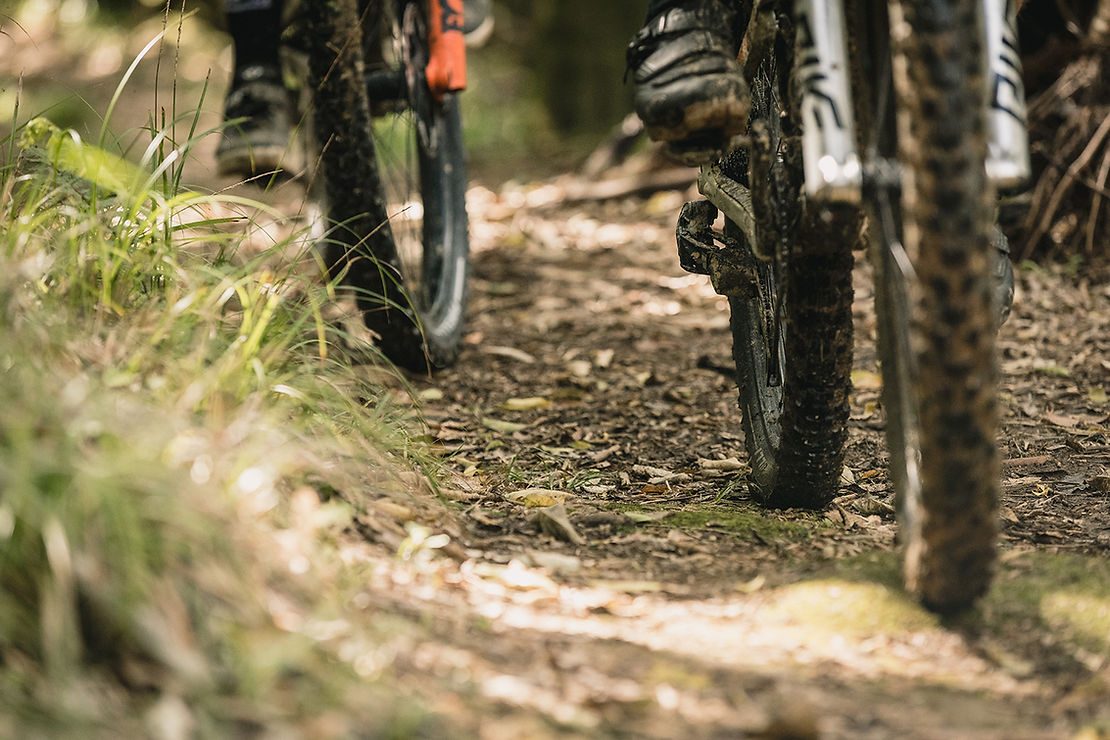
Some companies build a tyre using a hard, strong rubber, coated with a layer of softer compound for maximum adhesion. That results in a tyre that will perform well when new, but once that soft compound is gone the tyre is less than ideal. Other companies push that compromise onto the consumer (that is us). They offer a variety of compounds and leave us to decide whether we want grip or durability. Pirelli use the deep knowledge they have of chemistry to produce rubber compounds which are structurally strong, have optimal surface grip, and will retain the grip performance as the tyre wears.
Pirelli mountain bike tyres are organised in the same way across the entire range - with a letter and colour code to describe their intended application, following the logic used in Motocross:
H in Red means hardpack - small low knobs, designed for speed in the dry.
M in Yellow means mixed terrain - a bit more open, and some more depth to the tread pattern.
S in Blue is designed for soft conditions - a loose surface, or wet conditions, tyre.
R in Green is a rear specific tyre.
There are XC, Trail, Enduro and e-Bike ranges in the usual variety of sizes.
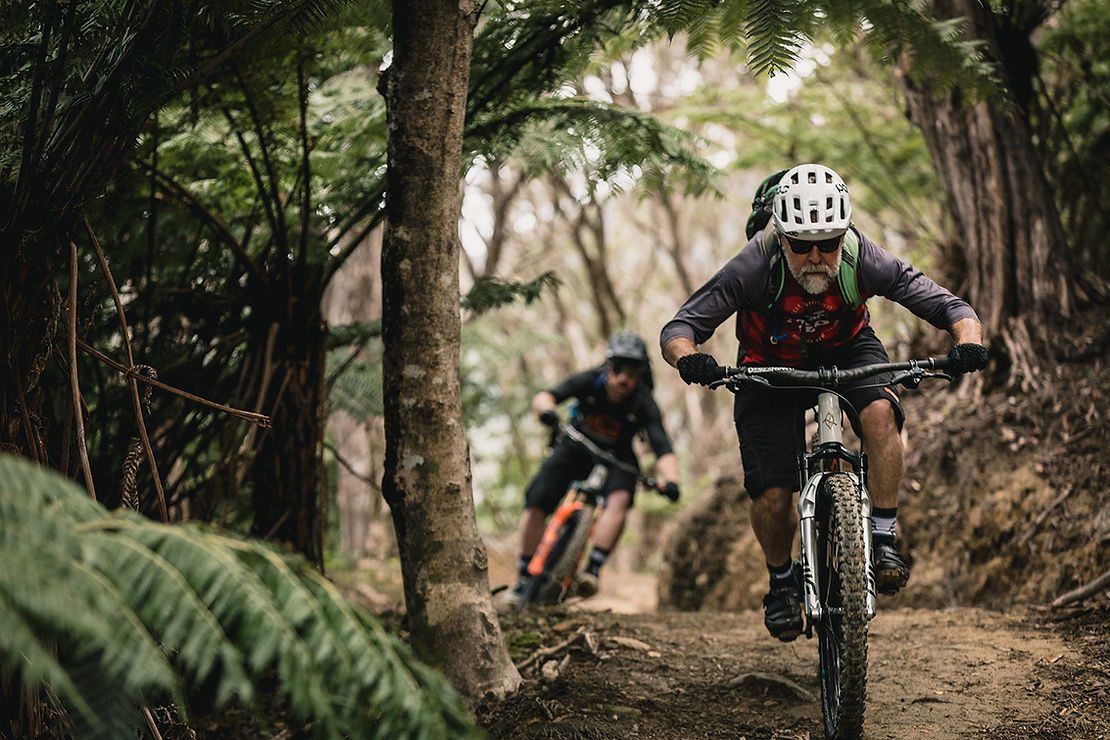
The first pair I got to sample were from the upcoming Enduro range, mounted on my Trek Fuel EX, a 29er. At 2.6” width, with very solid sidewalls, they are not lightweights, with a heft of 1140g per tyre. The front tyre was the S model, designed for loose conditions, with a very open tread pattern. The rear tyre (with a Green R!) has a mostly rectangular block tread pattern, with alternating wide and narrower blocks down the centre and two rows of very widely spaced knobs on the edges. The knobs on the outside edge are sculpted with several levels and notches, as well as small grooves across the face of all the knobs. Tubeless setup was fairly easy, they were a snug fit but once mounted they beaded quickly.
My first ride was on the day after a spell of rain, so I went looking for slippery roots and wet dirt. Initial impressions were based on the view over the bars: the Pirellis have a very round shouldered profile. They rolled better than I expected, and they didn’t seem to take any more effort than what I was used to on our way to the jungle at the top of the forest. The tyres had 23psi when we rolled out of Ride Central, and on the squeeze test they felt way too hard. I didn’t adjust them until we got to the top of the climb, where I dropped them to about 20psi – but they still felt over-inflated to the thumb. We took a lap down Tihi-O-Tawa in the native forest - a fairly natural trail of just over a kilometre, which drops 140 metres over that distance. It feels like half the trail is off-camber roots, and the best way to tackle them is to stay high. When the roots are wet and your rubber is carrying some mud, that isn’t always easy. I was happily surprised by the way the Pirellis handled things. The front end didn’t flinch, the bike heading straight where I pointed it. Any deviation was my fault. By halfway down I was feeling pretty confident, and the biggest root tangle was successfully navigated, delivering me to the small shelf I was hoping to get to, avoiding a slither into the quagmire that is the low-line on the trail. I ducked out of the trail and headed back up the hill, to take a run through the glorious Tuhoto Ariki, three kilometres or so of similar country, with a decent climb in the middle. The climb has a few sections that require your rubber to provide a firm grasp of the planet. Once again, no worries at all. I couldn’t get the rear tyre to let go.
Read Part 2 here.
Pirelli Store Locater is here
Words: Gary Sullivan
Images: Cameron Mackenzie

